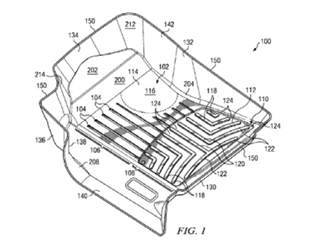The US Court of Appeals for the Federal Circuit affirmed a Patent Trial & Appeal Board ruling that method claims reciting a mechanism of action triggered by the co-administration of two known antihypertensive agents were obvious over the cited prior art. In re Couvaras, Case No. 22-1489 (Fed. Cir. June 14, 2023) (Lourie, Dyk, Stoll, JJ.)
This case arose out of applicant John Couvaras’s prosecution of patent claims reciting a method of increasing prostacyclin release in the systemic blood vessels to improve vasodilation in a human with essential hypertension by co-administering two therapeutic agents. During prosecution, Couvaras conceded that the two claimed therapeutic agents had been known as essential hypertension treatments for many decades. The examiner agreed, citing 10 references as confirmation. The examiner further found that the physiological results of co-administering the two therapeutic agents were not patentable because they naturally flowed from the claimed administration of the known antihypertensive agents.
Couvaras appealed to the Board, arguing that the increased prostacyclin release was unexpected and that objective indicia overcame any existing prima facie case of obviousness. The Board disagreed, ruling that the increased prostacyclin release was inherent in the obvious administration of the two known antihypertensive agents and that no evidence existed to support a finding of any objective indicia. Couvaras appealed.
Couvaras raised three arguments on appeal:
- The Board erred in affirming that a skilled artisan would have had motivation to combine the art.
- The claimed mechanism of action was unexpected, and the Board erred in discounting its patentable weight by deeming it inherent in the claimed method.
- The Board erred in weighing objective indicia of non-obviousness.
With respect to motivation to combine, the Federal Circuit agreed with the Board that the art supplied sufficient motivation to combine because the claimed therapeutic agents were known for decades to treat hypertension, finding the Board’s conclusion supported by substantial evidence. The Court found that Couvaras had forfeited a related argument for no reasonable expectation of success by failing to first raise that challenge to the Board.
The Federal Circuit also rejected Couvaras’s argument that the claimed mechanism of action was unexpected and therefore entitled to patentable weight. Couvaras argued that the Board downgraded the patentable weight of limitations drawn to the antihypertensive agents’ mechanism of action by deeming them to be merely inherent. According to Couvaras, even if the recited mechanism of action was inherent in the claimed administration of the two agents, that mechanism was unexpected because the increased prostacyclin release was unexpected and could not be dismissed as having no patentable weight due to inherency.
The Federal Circuit disagreed, explaining that Couvaras was attempting to claim a mechanism of action that naturally flows from the co-administration of two known antihypertensive agents and that “[n]ewly discovered results of known processes directed to the same purpose are not patentable because such results are inherent.” The Court allowed that while mechanisms of action may not always meet the most rigid standards for inherency, “[r]eciting the mechanism for known compounds [...]
Continue Reading
read more

 Subscribe
Subscribe



